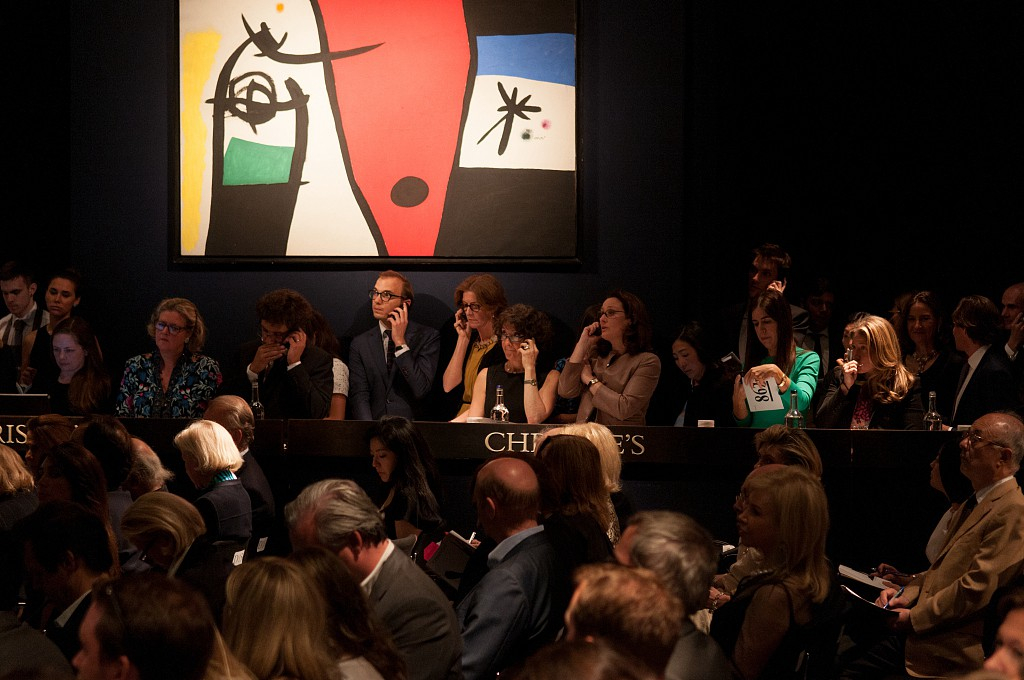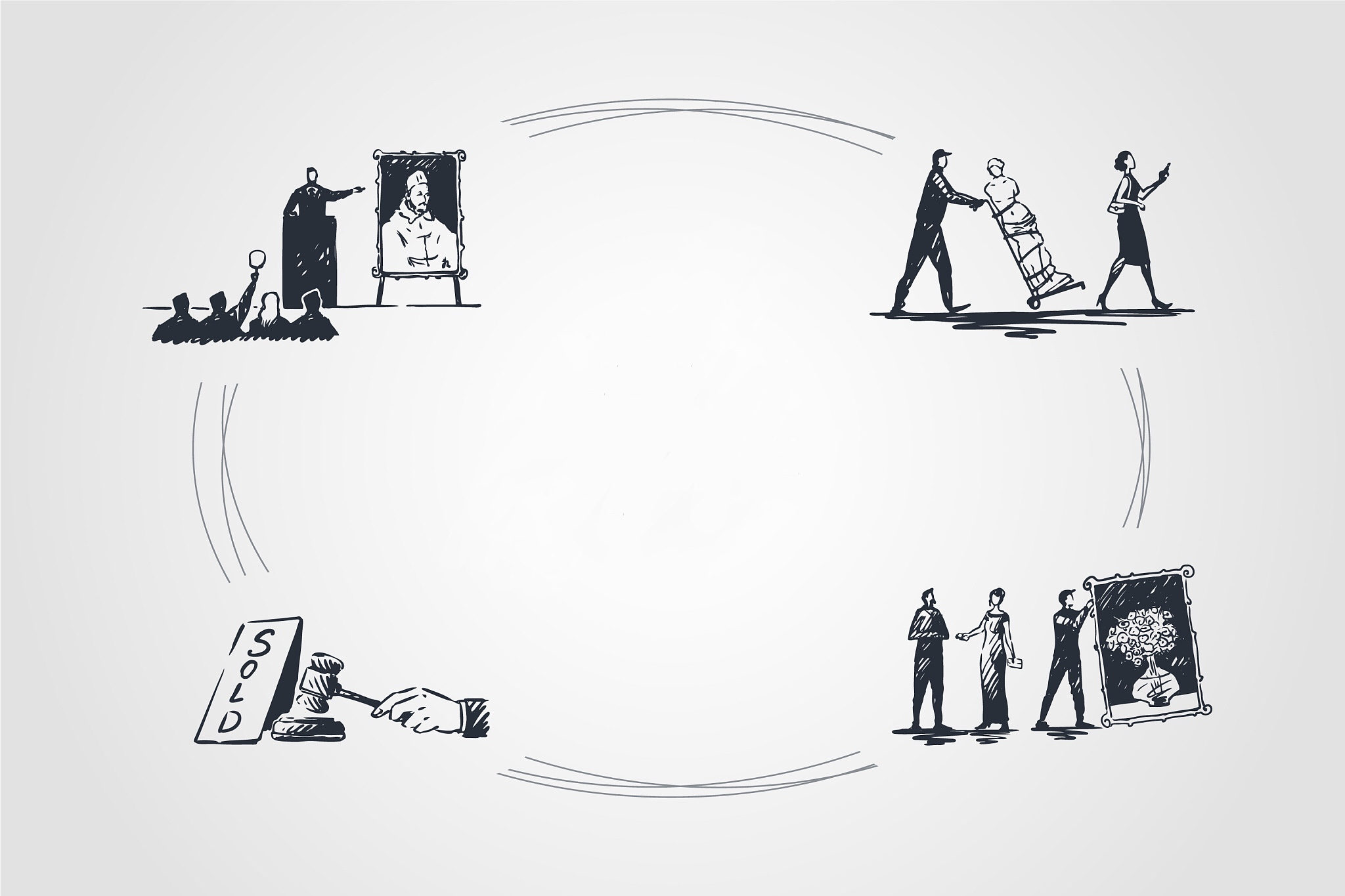We may see the art market as slow, sluggish and turbulent – but what happens when it finally comes to a standstill?
The database of Artnet.com, an art market website operated by Artnet Worldwide Corporation, analyzed the results of a global auction in March 2020, after the COVID-19 outbreak, and came up with the answer: sales plunged, average prices fell and collectors began to hoard artworks.

At a Christie's auction, buyers are bidding with agents over the phone. /VCG
At a Christie's auction, buyers are bidding with agents over the phone. /VCG
According to the analysis, art auction sales fell 75.8 percent in March 2020 compared with the same period in 2019. Global auction houses sold 227.6 million U.S. dollars worth of art in March, down from 939.3 million U.S. dollars in March 2019.
Besides, many supposedly lucrative events, such as Asian Art Week in New York, have been canceled or rescheduled for the second half of the year. Buyers also seemed less willing to pay for big-ticket items given the economy.
All in all, the number of the auction specials in March this year was 26 percent lower than in March 2019. This suggests that in times of global turmoil, sellers may choose to keep more valuable items, even though auctions have not stopped, as Artnet.com reported.
Lower price artworks are more welcomed online
Overall art sales fell at all price points in April, according to Artnet, but the high-end market was hit hardest.
Compared with March 2019, art sales in the one million U.S. dollars to 10 million U.S. dollars range fell 90.8 percent, while the 100,000 U.S. dollars to one million U.S. dollars range declined by an even smaller 70.9 percent. The minor declines over the same period were under 10,000 U.S. dollars and between 10,000 and 100,000 U.S. dollars for artworks, which fell only 26.5 percent and 53 percent, respectively.
Many of the sales were moved online in March because of the cancellation of several high-end auctions and related events. On the online market, lower-priced works are easier to sell and more attractive, Artnet.com said. Lower prices are also friendly to new buyers just getting into the auction scene. Sotheby's and Christie's reported that nearly 40 percent of their online auctions in March and early April were new clients.
Difference between internet auction and a traditional auction?
In the auction industry, at a traditional auction house, a lot has to be done between the gathering artworks and the final sale. For example, it takes time and effort to review the artwork, make the brochure and the publicity documents, cooperate with the media, rent the venue, and display auction items.

The process of the auction. /VCG
The process of the auction. /VCG
An online auction platform can directly upload auction items for review through the platform's standardized process. The website browsing replaces the exhibition catalog of the auction house, the overall promotion of the platform, and the member information system, which can quickly attract a large number of interested users, and of course, does not involve the matter of venue renting.
Online auctions also break down regional limits. Wherever buyers are, they can participate online, and the information is synchronized.
(Cover image made by Gao Hongmei)